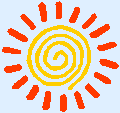|
Core Knowledge Outline |
Schedule of Lesson Topics
|
|
|
|
SOUND
|
JANUARY
|
|
|
|
Sound Waves
|
|
|
Vibrating objects create waves which are heard as sound
|
Vibrating objects create sound
|
|
Sound waves travel through solids, liquids, and gases
|
How sound travels through different mediums
|
|
Sound waves travel much more slowly than light waves
|
|
|
|
|
Qualities of Sound
|
|
|
Pitch
higher = faster vibrations
lower = slower vibrations
|
Sound pitch
|
|
Intensity
louder = stronger vibrations
softer = weaker vibrations
|
Sound intensity
|
|
|
|
Human Voice
|
|
|
Larynx
vocal cords
vibration produces voice
|
Larynx and vocal cord vibration
|
|
|
|
The Human Ear
|
|
|
How it works
|
How we hear and how to protect your hearing
|
|
How to protect your hearing
|
|
|
|
|
|
|
ECOLOGY
|
|
|
|
|
Habitats
|
What is a habitat?
|
|
Interdependence of organisms and their environment
|
Habitat 1: case study
Habitat 2: case study
|
|
|
|
Balance of Nature
|
Balance of Nature
|
|
Nature in an ever-changing state
|
|
|
|
|
The Food Chain
|
Food relationships in nature
|
|
Producers
|
Producers
|
|
Consumers
|
Consumers
|
|
Decomposers
|
Decomposers
|
|
FEBRUARY
|
|
Ecosystems
|
What is an ecosystem?
|
|
Effect of natural changes
climatic conditions
food supply
|
Ecosystem 1 : case study
Ecosystem 2: case study
How natural changes affect an ecosystem
|
|
Effect of human changes
development
resource management
|
How human changes affect an ecosystem
|
|
|
|
Human Threats to the Environments
|
How we pollute the environment
|
|
Air pollution
emissions
smog
|
Air pollution
|
|
Water pollution
industrial waste
chemical run-off
|
Water pollution
|
|
|
|
Protective Measures
|
|
|
Conservation
|
Conservation efforts
|
|
Recycling
|
Recycling efforts
|
|
Waste-reduction
|
Waste-reduction efforts
|
|
Education
|
|

